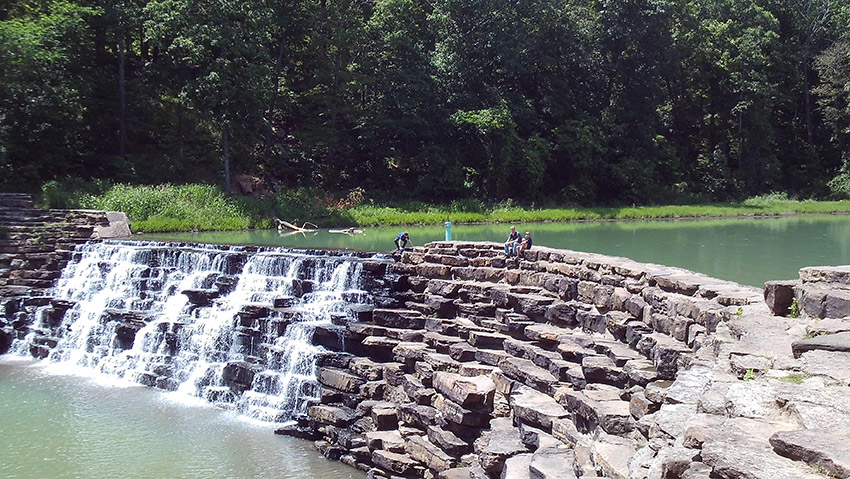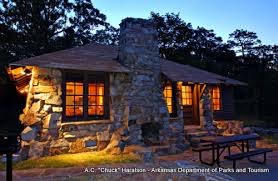By Dr. Curtis Varnell
The visitor’s center was packed, the lodge full, and the camping grounds were at capacity. A plethora of the vehicles were from out of state, many from Texas. Visitors flocked the trails, observing the beauty of the changing color of leaves of the hardwood trees. Others attended special programs on Arkansas history and culture presented by the park interpreters and invited guests. Meandering down a trail, we observed old home sites, identified trees and plants, saw wildlife, visited a flowing spring, and then toured the remains of Buckman Inn pool. Arkansas was celebrating its one-hundredth year of our state park system.
Arkansas abounds in a variety of beautiful settings and is a choice place for visitors who want to get away to “the Natural State.” Tourists were already making their way to the various mountains and waterways of the state when Thomas W. Hardison realized that preserving some of our natural scenic and historic sites would not only attract tourism but also preserve places that might otherwise be lost to future generations. Hardison, a resident of Petit Jean Mountain, first tried to get the federal government to declare a part of the mountain a national park. Stephen Mather, director of the National Park Service, determined the site was too small for national endorsement and suggested a state park system. Hardison and his friends then persuaded the legislature to develop the area as a state park and, in 1923, Petit Jean became the first state park.

Unfortunately, at the time there was little funding to do much with the park but that changed when the Civilian Conservation Corps (CCC) was formed by Roosevelt during the great depression. The New Deal programs built Arkansas’s park system with Petit Jean being the first to see construction. Company 1781- a group of Arkansas veterans- built the beautiful Mather Lodge from logs and natural stone. Other structures, roads, and bridges soon followed, many of which still stand. Nearby on Mt. Nebo (near Dardanelle), Company 1780-v, led by Captain H. L. Eagan, brought twenty tons of equipment and 186 veterans up the steep mountain side and constructed the park facility there.
The workers, with an average age of around twenty, stayed in military style camps while they constructed the buildings, trails, and overlooks that formed the state parks. In Logan county, they constructed a gravel road straight up Magazine Mountain, built a lodge overlooking the Petit Jean River, and constructed numerous cabins, a restaurant, and picnic areas. Others, some from the WPA, were construction beautiful adjoining lakes at Spring Lake, Cove Lake, and other areas.
Company 797, a group of men from North Dakota, made the trip to Arkansas to work and joined other groups in constructing the Devils Den State park with its massive stone dam on Lee Cree as well as cabins, offices, and campgrounds. Other groups constructed the facilities that eventually made up Blanchard Springs, Crowley’s Ridge state park, Lake Catherine, and Buffalo Point.

Today, thanks to the foresight of men like Hardison, Arkansas has fifty-two state parks spread all across the state. Annually, they attract thousands of visitors which is an economic boom for the state. Visit Cedar Falls or Rock House cave on Petit Jean, visit the sandstone caves in Devils Den, go to the highest point in Arkansas on Magazine Mt., spend a night in one of the many
lodges and cabins in the state park, or fish in one of the many lakes and you realize what a great gift that was presented to us in 1923 when our state created the Arkansas Park system.







